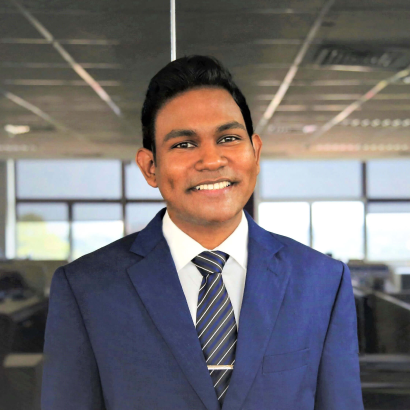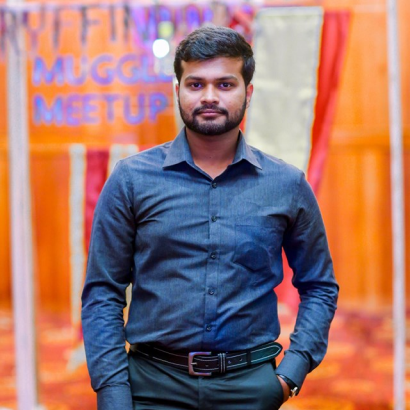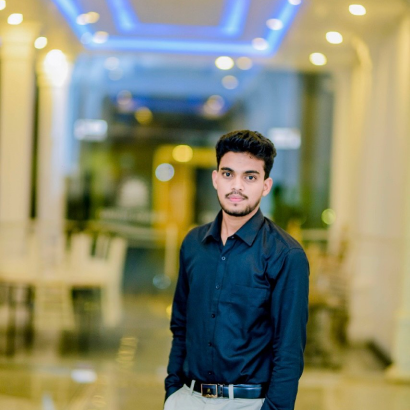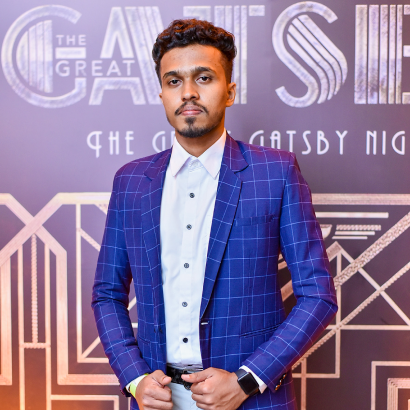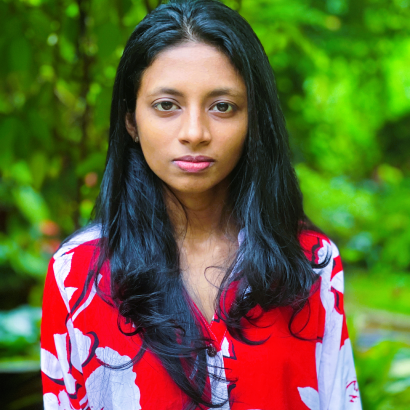Project Scope
Literature Survey


Figure 1. Monthly tourist arrivals 2021-2022
An Augmented Reality (AR) application tailored for indoor navigation within complex structures like hospitals was developed[1]. This innovative app empowers users to precisely pinpoint their locations within vast indoor spaces using smartphones or tablets. The researchers also conducted a user evaluation to assess the app's usability and overall effectiveness.In another study[2], researchers explored the creation of immersive virtual models of historical buildings using AR and Virtual Reality (VR) technologies. They addressed challenges related to historical accuracy, proposing a comprehensive framework that includes 3D modeling, texturing, and lighting techniques to faithfully recreate these structures.
Research paper [3] used Deep Learning and Convolutional Neural Networks (CNN) to identify ancient artifacts, achieving 90% classification accuracy. Source [4] focused on Optical Character Recognition (OCR) with CNN, but limited data led to recognizing only 9 characters. Source [5] proposed a recommendation system using item features and a k-nearest neighbor algorithm to enhance recommendation accuracy.
References
- J. Drewlow, M. Däppen, and M. Lehmann, "Navigation with Augmented Reality in a Hospital," Healthcare of the Future 2022, vol. 299, pp. 111-114, 2022.
- N. Desai, "Recreation of history using augmented reality," ACCENTS Transactions on Image Processing and Computer Vision, vol. 4, 2018.
- Y. Zhang, J. Wang, X. Wu, Y. Wu, and J. Chen,, "Research Ancient Artifact Identification Methods under Intelligent Perception and Recognition Technology," Advances in Civil Engineering,, vol. 2021, p. 9, 2021.
- R. Vijayalakshmi and J. M. Gnanasekar, "A Review on Character Recognition and Information Retrieval from Ancient Inscriptions," 2022 8th International Conference on ICSSS, Chennai, India, 2022, pp. 1-7
- M. J. Pazzani and D. Billsus, "Content-Based Recommendation Systems," in Springer-Verlag Berlin Heidelberg, Berlin , 2017. [10] A. Priyati, A. D. Laksito and H. Sismoro, "
Research Gap
Following areas are the research gaps found in most of the recent researches.
Identification & classification
There are no smart solutions for artifact identification classification and inscription translation mobile applications in Sri Lanka.There is still a research gap in detecting ancient Sri Lankan artifacts using real object direction and Convolutional Neural Networks (CNN) and translating Sri Lankan inscriptions utilizing Optical Character Recognition and Natural Language Processing. Developing such a methodology can improve our understanding of Sri Lanka's rich cultural heritage and contribute to the conservation and interpretation of its ancient artifacts.
AR Recreation
Incorporating modern technologies such as Augmented Reality (AR) into historical sites stands to significantly enhance the tourism industry. By creating an interactive and captivating environment, AR enables visitors to enjoy a more immersive experience. With the aid of AR, users can explore historical sites, envisioning them as they existed in their prime, thus allowing them to physically navigate within the actual site and providing a tangible connection to the architectural technologies of the past.
Recommendation and Places
Developing a hybrid recommendation system, as opposed to a single algorithm-based system, that combines collaborative filtering and content-based algorithms in order to create a more accurate recommendation system. This hybrid approach aims to leverage the strengths of both methods while mitigating the issues associated with the cold start problem, drawing upon insights from past studies and research in the field.
Research Problem & Solution
Proposed Problem
Sri Lanka is that the country boasts numerous historically significant sites, such as ancient temples, palaces, and forts, which offer valuable insights into the nation's culture and history. However, these sites have deteriorated, with their intricate artwork faded. This decay has made it challenging for local and foreign visitors to obtain accurate information about the historical sites, diminishing their appeal.
The local guides may not always possess accurate or up-to-date knowledge, relying on ancestral information. Language barriers and a lack of understanding of ancient inscriptions further prevent visitors from fully appreciating the cultural and historical significance of these sites. Additionally, many tourists miss out on lesser-known historical sites as they rely on online information, potentially overlooking hidden sites. Therefore, there is a need to address these issues and enhance the overall visitor experience at historical sites in Sri Lank..
Product Introduction - Solution
Proposed Solution
Ancient historical places are now turned into ruins, our goal is to reconstruct a chosen location from the historical locations in Sri Lanka and lead the user through the journey across the different areas of the selected location while providing the user with accurate information and recommendations. Vatadage will have an Augmented Reality-based model built and placed on its precise GPS coordinates. A navigation system using augmented reality is also available, guiding the user without missing any locations. A voice-activated AI personal assistant that can respond to questions from users regarding the surroundings of the place. The AI assistant can provide information on the location, its history, and interesting facts. Visitors are welcome to ask questions and interact with AI assistant to receive answers.
When walking around the Vatadage, there are many artifacts to be seen. By using object detection algorithms, the user may just point their smartphone camera in the direction of the objects they want to learn more about. When user found inscriptions, user can simply translate those inscriptions to the readable language. A recommendation system operates that provides customers individualized suggestions, assisting them in swiftly and conveniently locating the most relevant objects, information, or services while enhancing user pleasure. We'll build a Lankan Legacy mobile application using these solutions. The application can grow to accommodate a wide variety of historical locations. But Vatadage is the exclusive topic of this study. The supported historical areas can be readily expanded if this program is properly deployed in one location.
Research Objectives
AR Model and AR navigation system
The first objective is develop a unique AR navigation path that’s working for the Vatadage location area. Contrasting to existing AI speech recognition systems, this AI-powered speech recognition has accurate and in-depth understanding and information of Vatadage and its components. AR model which placed according to the actual GPS coordinates of Vatadage
Real Time Artifact identification and classification
The second objective is introducing real-time detection and cutting-edge instance segmentation with YOLOv8. Our innovative approach sets a new standard for segmenting artifacts in Sri Lanka's historical sites. By harnessing instance segmentation, we can precisely delineate each artifact, paving the way for highly accurate classification through advanced deep learning techniques. This breakthrough enables users to seamlessly identify artifact types in real-time, providing them with precise and detailed information about these historical treasures.
Identification of letters in inscriptions and conversion to readable format.
The third objective is introduces a new approach to identifying and converting letters in inscriptions, which could be more efficient or accurate than existing methods and aim to improve the accuracy of letter identification and conversion, which could have important implications for preserving historical artifacts and understanding ancient cultures.
Develop an effective artifact recommendation system for users
The fourth objective is Using collaborative filtering and Content-Based filtering algorithms can approach the hybrid recommendation system. The system can provide a more comprehensive and personalized view of a tourist's preferences, behavior, and travel history. This can lead to more accurate and relevant recommendations.
Methodology

Figure 2. High Level Architecture of the system.
The proposed system consists of 6 main components. They are;
- AR (Augmented Reality) based model of the Vatadage
- AR and computer-vision based navigation system.
- Voice-controlled digital assistant.
- Real-time artifact detection and classification
- Identification of letters in inscriptions and convert to readable form.
- Develop a recommendation system for the users.
The proposed solution aims to provide a comprehensive and technologically advanced mobile application tailored to restoring and exploring the historic Vatadage monument. As shown in the Fig. 2 the multifaceted approach encompasses various cutting-edge technologies, including AR, AR-based navigation, object detection algorithms, inscription translation, and recommendation system. Through the integration of AR, users can virtually traverse the Vatadage in its original splendor, allowing them to witness the monument's grandeur as it stands in its prime.
The application employs sophisticated object detection algorithms to provide users comprehensive insights into artifacts, facilitating identification and classification. Users can access translations and analyses of the inscriptions discovered within the Vatadage, shedding light on the ancient language, historical events, and religious rituals of the Polonnaruwa era. Furthermore, users will receive recommendations for exploring other significant historical sites based on their preferences and historical data.
Technologies Used

Python

React

Tensorflow

Keras

MongoDB

Firebase

Google Cloud

Kafka

Doker

Google Colab

Google map API

Jwt
Milestones
Timeline in Brief
-
March 2023
Project Proposal
A Project Proposal is presented to potential sponsors or clients to receive funding or get your project approved.
Marks Allocated : 6
-
May 2023
Progress Presentation I
Progress Presentation I reviews the 50% completetion status of the project. This reveals any gaps or inconsistencies in the design/requirements.
Marks Allocated : 6
-
August 2023
Research Paper
Describes what you contribute to existing knowledge, giving due recognition to all work that you referred in making new knowledge
Marks Allocated : 10
-
September 2023
Progress Presentation II
Progress Presentation II reviews the 90% completetion status demonstration of the project. Along with a Poster presesntation which describes the project as a whole.
Marks Allocated : 18
-
November 2023
Website Assessment
The Website helps to promote our research project and reveals all details related to the project.
Marks Allocated : 2
-
November 2023
Logbook
Status of the project is validated through the Logbook. This also includes, Status documents 1 & 2.
Marks Allocated : 3
-
November 2023
Final Report
Final Report evalutes the completed project done throughout the year. Marks mentioned below includes marks for Individual & group reports and also Final report.
Marks Allocated : 19
-
November 2023
Final Presentation & Viva
Viva is held individually to assess each members contribution to the project.
Marks Allocated : 20
Downloads
Documents
Please find all documents related to this project below.
Topic Assessment
Submitted on 2023/02/25
- GroupDownload
Project Charter
Submitted on 2023/03/25
- GroupDownload
Project Proposal
Submitted on 2023/05/04
- IndividualDownload
Status Documents I
Submitted on 2023/05/29
- IndividualDownload
Status Documents II
Submitted on 2023/09/10
- IndividualDownload
Research Paper
Submitted on 2023/08/20
- GroupDownload
Poster
Submitted on 2023/10/29
- GroupDownload
Presentations
Please find all presentations related this project below.
About Us
Meet Our Team !
Contact Us
Get in Touch
Contact Details
For further queries please reach us at lankanlegacyar@gmail.com
Hope this project helped you in some manner. Thank you!
-Team LankanLegacy
